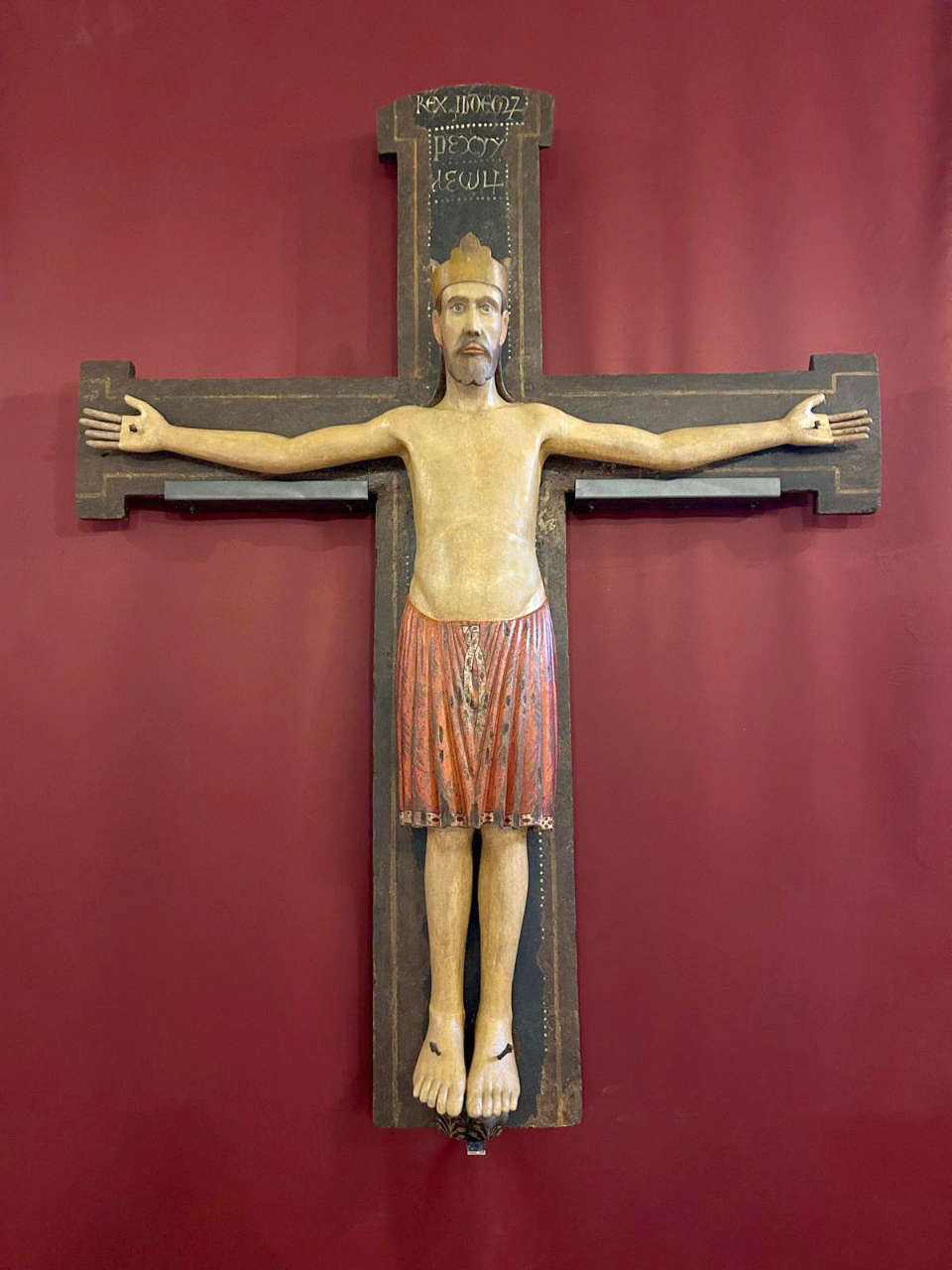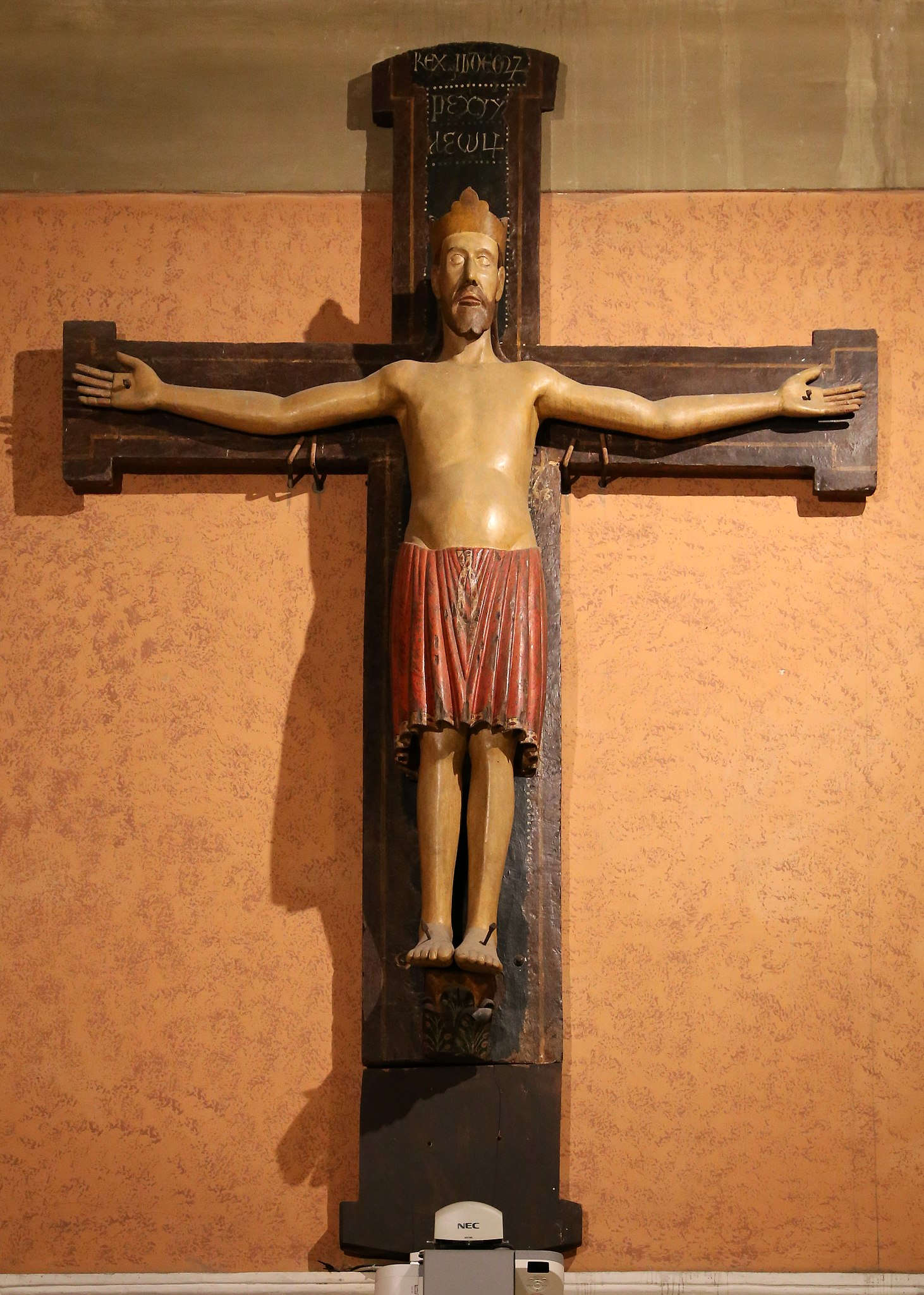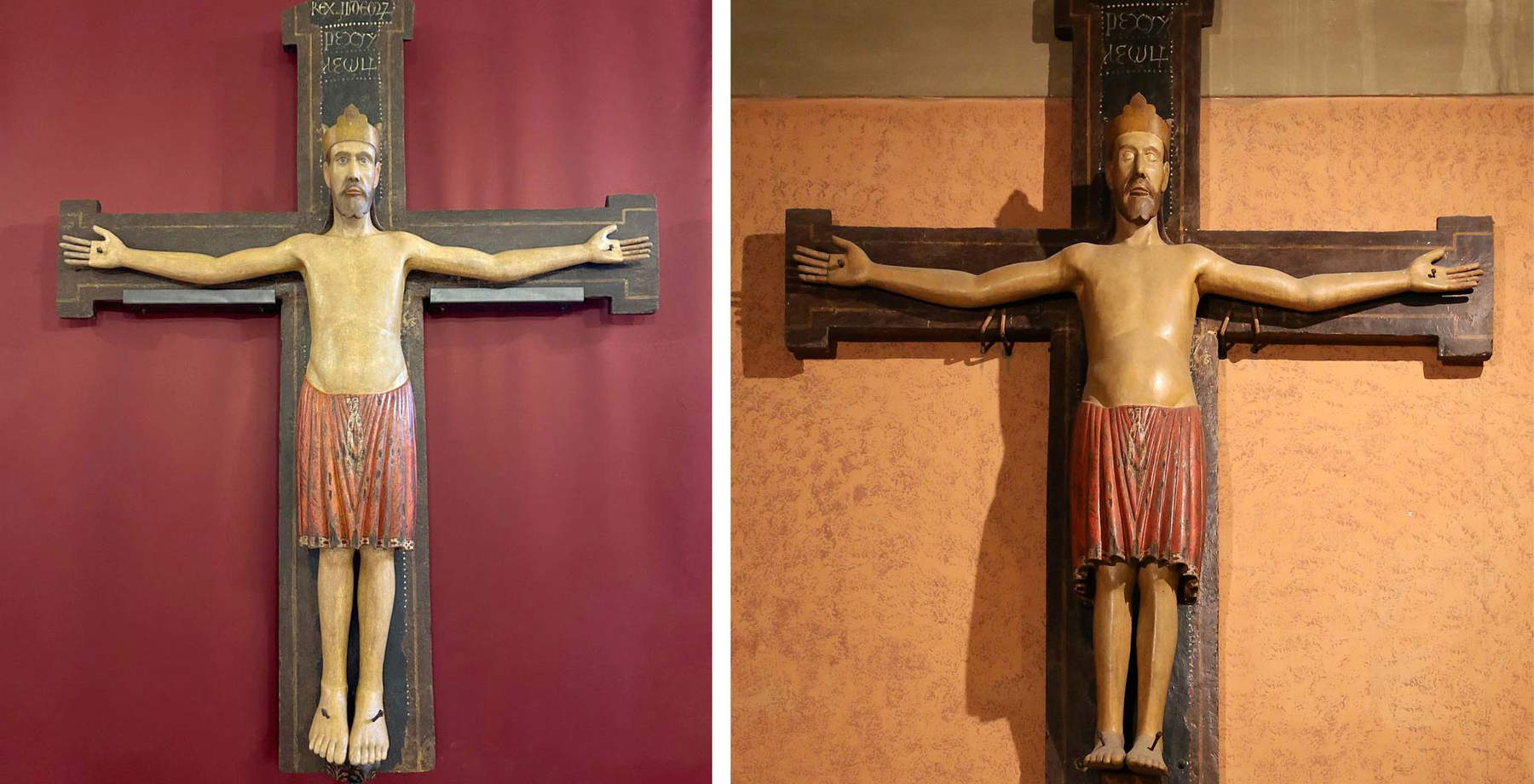Forli, 12th-century Romanesque crucifix restored
In Forli, after restoration work, the precious 12th-century Romanesque crucifix preserved in the Romagnola city’s cathedral is returning to its home. This work of art depicts Jesus Christ alive on the cross, without the signs of the passion, with his eyes open and a royal crown on his head instead of the traditional crown of thorns. The restoration was carried out by Carlotta Scardovi ’s SOS Art company in Bologna.
Before its relocation to the Cathedral, the Crucifix will be on public display in the Bishop’s Palace Hall of Honor. The exhibition is open from July 22 to Aug. 9 and Aug. 26 to Sept. 6, Monday to Friday, 9 a.m. to noon. This temporary exhibition offers a unique opportunity to admire up close a work that is an important example of Romanesque sacred art.
The Crucifix will be relocated to Forli Cathedral on Saturday, September 14, on the Feast of the Exaltation of the Cross, which also coincides with the fifth anniversary of Benedetta Bianchi Porro’s beatification. This date will mark the return of the Crucifix to its traditional place, allowing the faithful and visitors to contemplate it in its original location.
The Romanesque Crucifix in Forli Cathedral is particularly significant for its iconography. Unlike traditional representations that show Christ suffering, this work depicts him alive, a symbol of victory and royalty, a theological interpretation that emphasizes resurrection and divine glory.
“It is,” explains Claudio Giannelli, director of the diocesan Office for Ecclesiastical Cultural Heritage, “a polychrome sculpture in carved wood, of great size and great value, carved, assembled and then painted, resting on a valuable cross, also wooden, originally four-lobed and painted, with traces of polychrome and gilded decorations. The restoration work, carried out by the SOS Art laboratory of Carlotta Scardovi of Bologna, in memory of Martino Brunelli, focused on cleaning the surface and consolidating the constituent layers of the work and on the subsequent aesthetic rearrangement, in order to restore an overall unity of reading to the work.”


 |
| Forli, 12th-century Romanesque crucifix restored |
Warning: the translation into English of the original Italian article was created using automatic tools. We undertake to review all articles, but we do not guarantee the total absence of inaccuracies in the translation due to the program. You can find the original by clicking on the ITA button. If you find any mistake,please contact us.




























